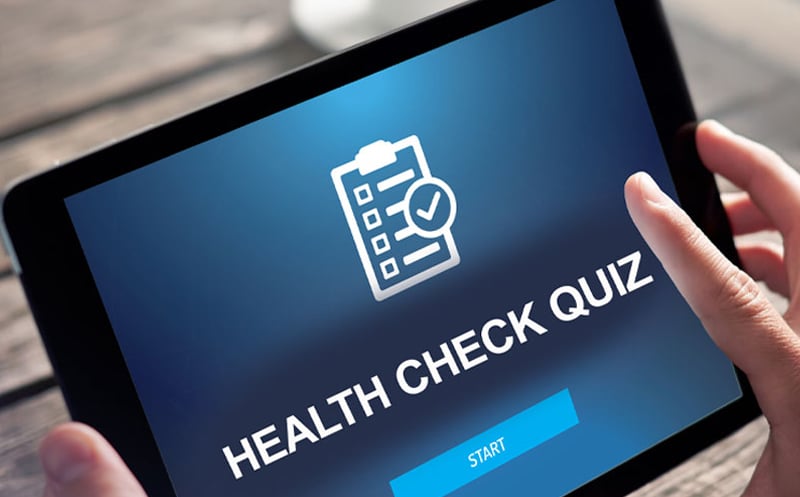index
What Is Prediabetes?
Prediabetes, also known as insulin resistance, is defined as having slightly elevated blood glucose levels; however, the levels are not high enough to be considered type 2 diabetes. Prediabetes increases the risk of developing several ominous health conditions, including heart disease, kidney disease, stroke, and type 2 diabetes. In the United States, approximately 38 percent of American adults have prediabetes. Research has shown that only about 19 percent of these adults are aware they have prediabetes. It is essential to know about the warning signs of prediabetes and how you can reduce your risk of developing prediabetes.

Knowing the warning signs will protect your health and allow you to get tested to determine if you have prediabetes. Eating a healthy diet, increasing your activity levels, and maintaining a healthy weight can help you rebalance your blood sugar levels and restore them to normal.
Who Is at Risk of Developing Prediabetes?
Prediabetes occurs when the body can no longer digest glucose (sugar). The pancreas makes insulin, a hormone that shuttles glucose from the blood into the various cells for energy use. In the case of prediabetes, insulin is resistant to moving glucose. The pancreas responds by creating more insulin to try to make the cells respond. Over time, the pancreas cannot keep up, causing glucose levels to rise.
Prediabetes can go undetected for many years until a health problem like type 2 diabetes arises. Although researchers do not know the cause of prediabetes, they believe genetics may play a role. It is vital to have blood sugar levels tested yearly, particularly if you have any of the following risk factors of prediabetes:
- Age – Diabetes can occur at any age; however, risk increases after age 45.
- Diet – Eating a diet filled with processed foods, sugary beverages, and red meat increases the risk of prediabetes.
- Ethnicity – Certain races and ethnicities are more likely to develop prediabetes, including American Indians, Hispanics, African Americans, and Asian Americans.
- Family History – If you have a parent or a sibling who has type 2 diabetes, you are at an increased risk of developing prediabetes.
- Gestational Diabetes – If you have gestational diabetes (diabetes while pregnant), you have an increased risk of developing prediabetes.
- High Blood Pressure – Researchers have associated high blood pressure with insulin resistance.

- High Triglycerides – High levels of fat in the blood can increase your risk of developing prediabetes.
- Polycystic Ovary Syndrome – Women diagnosed with PCOS have a greater risk of developing prediabetes.
- Sedentary Lifestyle – Individuals who exercise less than 3 times per week are at risk of developing prediabetes and type 2 diabetes.
- Sleep Apnea—Sleep is vital to health. Sleep apnea increases the risk of insulin resistance, which in turn raises the risk of prediabetes and type 2 diabetes.
- Tobacco Smoking – Smoking can increase the risk of insulin resistance. Furthermore, it can increase the risk of complications of prediabetes.
- Waist Size– Individuals who have excess fat in their midsection are at an increased risk of prediabetes and type 2 diabetes. Women with a waist larger than 35 inches and men with a waist larger than 40 inches are at an increased risk of developing prediabetes.
- Weight – Being overweight or obese significantly increases insulin resistance, leading to prediabetes.
Prediabetes Warning Signs
The early warning signs of prediabetes can vary from individual to individual. Oftentimes, the signs are so mild that you do not realize anything is wrong until you are diagnosed with type 2 diabetes and look back at your health. Below are some common signs of prediabetes.

1. Blurry Vision
Elevated blood glucose levels can damage the eyes and the tissues surrounding them. Over time, the shape of the lens can distort, resulting in focus issues. Diabetic retinopathy is the term used to describe damage to the eyes caused by high blood sugar levels.
2. Fatigue
Most prediabetics complain of feeling tired all the time. When glucose cannot correctly enter cells due to insulin resistance, the cells in your body do not have the energy they need, leading to fatigue, irritability, loss of motivation, headaches, concentration difficulties, and slow reflexes.

3. Frequent Urination
When your body doesn’t absorb glucose, your kidneys remove it from your blood. If they cannot quickly remove it from your bloodstream, they excrete the glucose through your urine. Frequent urination means urinating more than seven times in 24 hours. When your body removes excess glucose through your urine, your risk of urinary tract infections increases.
4. Increased Thirst
As the body tries to flush out excess glucose, it diverts fluid from your body into the urine, leading to dehydration and dry mouth. When you are dehydrated, the body will make you crave water, which is the reason for increased thirst.
5. Increased Hunger
Your body uses glucose as energy. When you become insulin resistant, glucose stays in your bloodstream rather than entering your cells. When this occurs, the cells in your body think you are starving.
6. Neuropathy
High glucose levels can damage the nerves in your extremities, causing diabetic neuropathy. This condition can cause tingling, burning, or pain in your extremities. Some individuals also report having cold hands or feet. If you begin noticing numbness or tingling in your extremities, talk with your doctor, as this can be an early warning sign of prediabetes.
7. Recurring Infections and Slow Healing
When your glucose levels are high, it can slow circulation, making it more difficult for your body to deliver the nutrients it needs to heal wounds. Increased blood sugar levels weaken your immunity, which can increase the frequency of infections. Prediabetes can increase your risk of ear, nose, skin, soft tissue, throat, and urinary tract infections.
You may also exhibit the classic signs of type 2 diabetes, which include patches of darkened skin on the knees, knuckles, elbows, armpits, or neck. If you have any symptoms or are concerned about diabetes, contact your functional medicine practitioner and schedule a glucose screening test.
Reversing Prediabetes
Prediabetes acts as a warning light for future health complications, including type 2 diabetes, heart disease, high blood pressure, high cholesterol, kidney disease, nerve damage, skin Issues, stroke, vision problems, and much more. Luckily, numerous lifestyle modifications can reverse prediabetes and lower the risk of developing type 2 diabetes.
- Dietary Modifications
Removing processed foods, sugary snacks, and beverages reduces insulin resistance. Replace these items with whole foods, such as fresh vegetables, fruit, lean proteins, whole grains, and healthy fats.
- Exercise
Get 30 minutes of exercise, such as walking, cycling, or swimming, five days per week. If you cannot set aside 30 minutes at once, you can break this down into two 15-minute sessions daily.
- Hydration
Drinking plenty of water is a great way to reverse prediabetes and even prevent type 2 diabetes. It helps flush glucose from the body and to avoid dehydration. Water is also an excellent substitute for sugar-laden beverages like sodas and fruit juices. Drink at least eight 8-ounce glasses of water daily. Sipping water throughout the day works better than guzzling the recommended amount.
- Increase Fiber Consumption
Fiber-rich foods reduce your risk of type 2 diabetes in several ways. Fiber can help with weight loss. In addition, fiber-rich foods are satisfying and will keep you fuller for extended periods, thus reducing snacking. Fiber also slows digestion, which helps prevent glucose spikes. Some great sources of fiber include whole grains, legumes, vegetables, and fruits.
- Lose Weight
Being overweight increases your risk of developing prediabetes and type 2 diabetes. Losing as little as 5 percent of your body weight can significantly improve insulin response, reverse prediabetes, and reduce the risk of type 2 diabetes. Choose a healthy diet that includes nutrient-dense vegetables, lean proteins, whole grains, and fruits when trying to lose weight. For the best results, look for diets that include low-glycemic-index foods.
- Sleep
You may have sleep apnea if you snore loudly, gasp for air, experience daytime sleepiness, or wake up with a headache. Sleep apnea is a common sleep disorder that causes you to stop breathing periodically throughout the night and increases insulin resistance.
- Stop Smoking
Smoking increases the risk of insulin resistance, type 2 diabetes, prediabetes, lung cancer, and heart disease. There are many great quit-smoking products or programs on the market to help a person quit once and for all.
- Work with a Holistic Health Coach or Nutrition Counselor
Figuring out what to eat can be difficult when you are prediabetic. A health coach or holistic nutritionist can help you develop healthy meal plans and provide guidance on the foods you should eat and which ones to avoid to stabilize your glucose levels and improve your health.

Holistic Approach To Dealing With Prediabetes
Prediabetes can damage your organs and tissues. Prediabetes is a warning of an increased risk of type 2 diabetes, but getting the diagnosis does not guarantee you will develop insulin resistance. You can make many natural lifestyle modifications to normalize glucose levels to a healthy range.
Prediabetes can damage your organs and tissues. Unfortunately, many men and women unknowingly have higher than normal glucose levels. If you are experiencing one or more of the warning signs of prediabetes, we can help. Our holistic practitioners will work with you and show you how to control your glucose levels, reverse prediabetes, and protect your body from damage caused by elevated glucose levels. In case you have been diagnosed with Type 2 Diabetes, a holistic approach to diabetes management and treatment can help.























